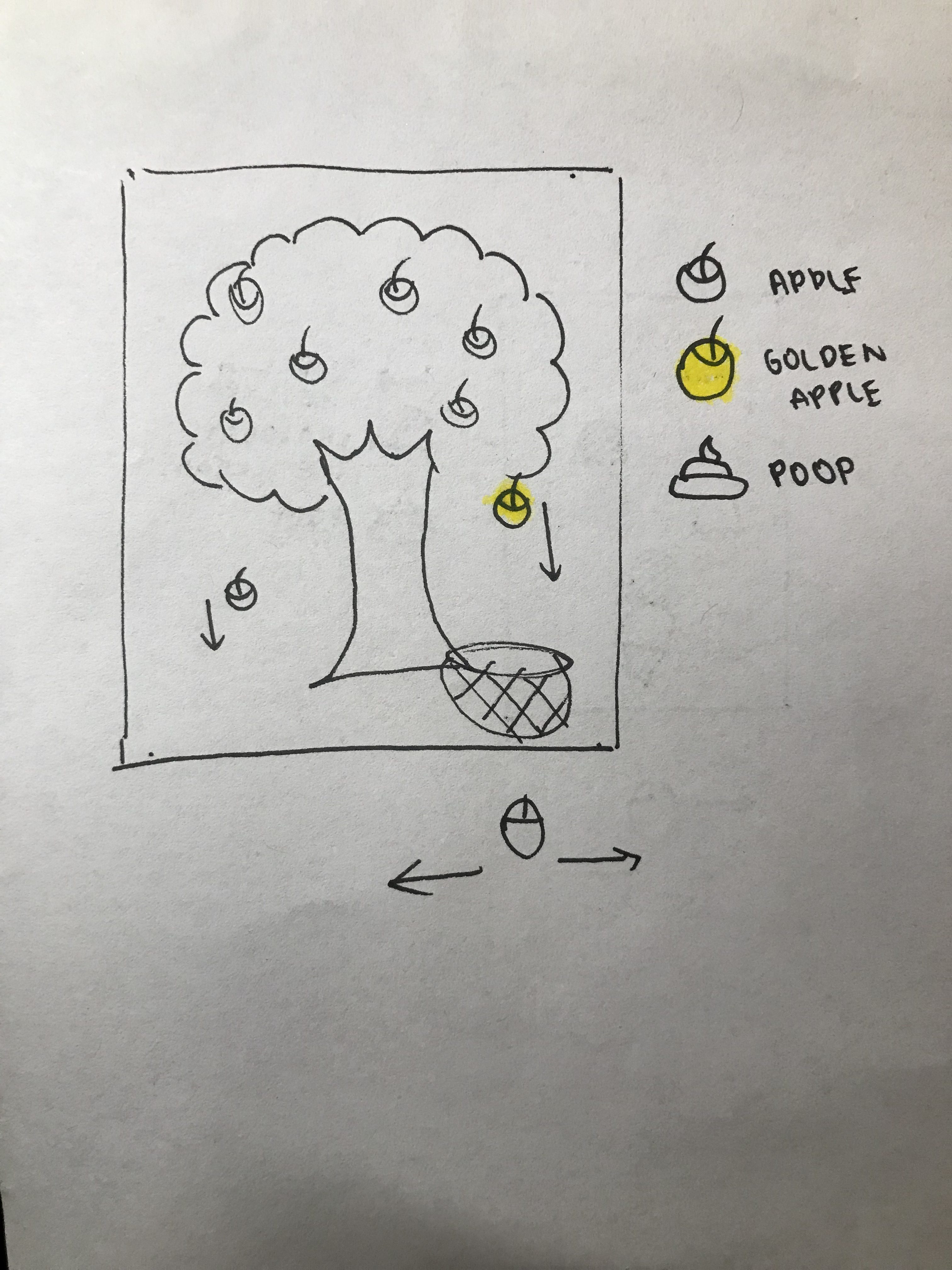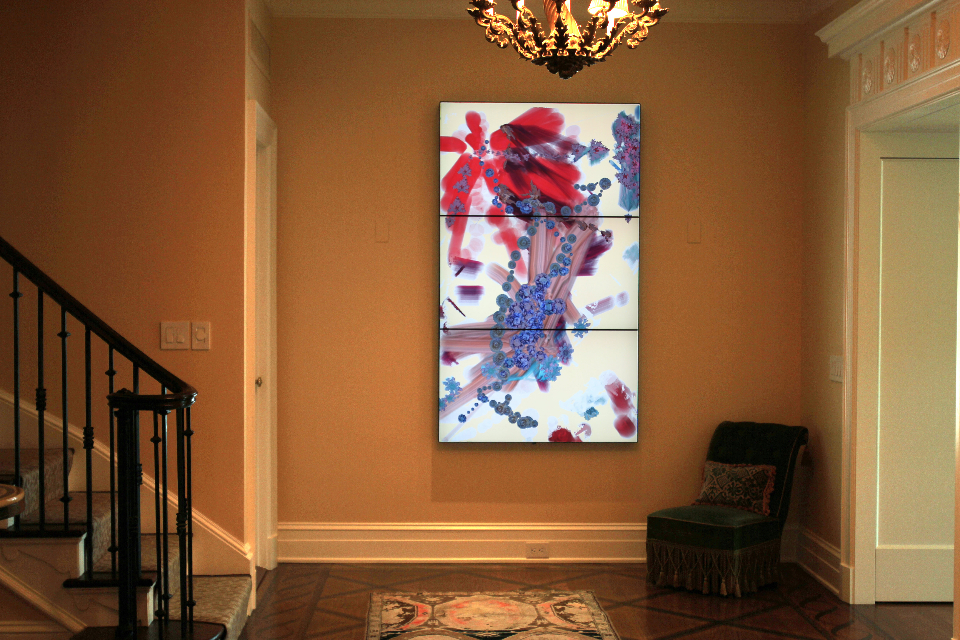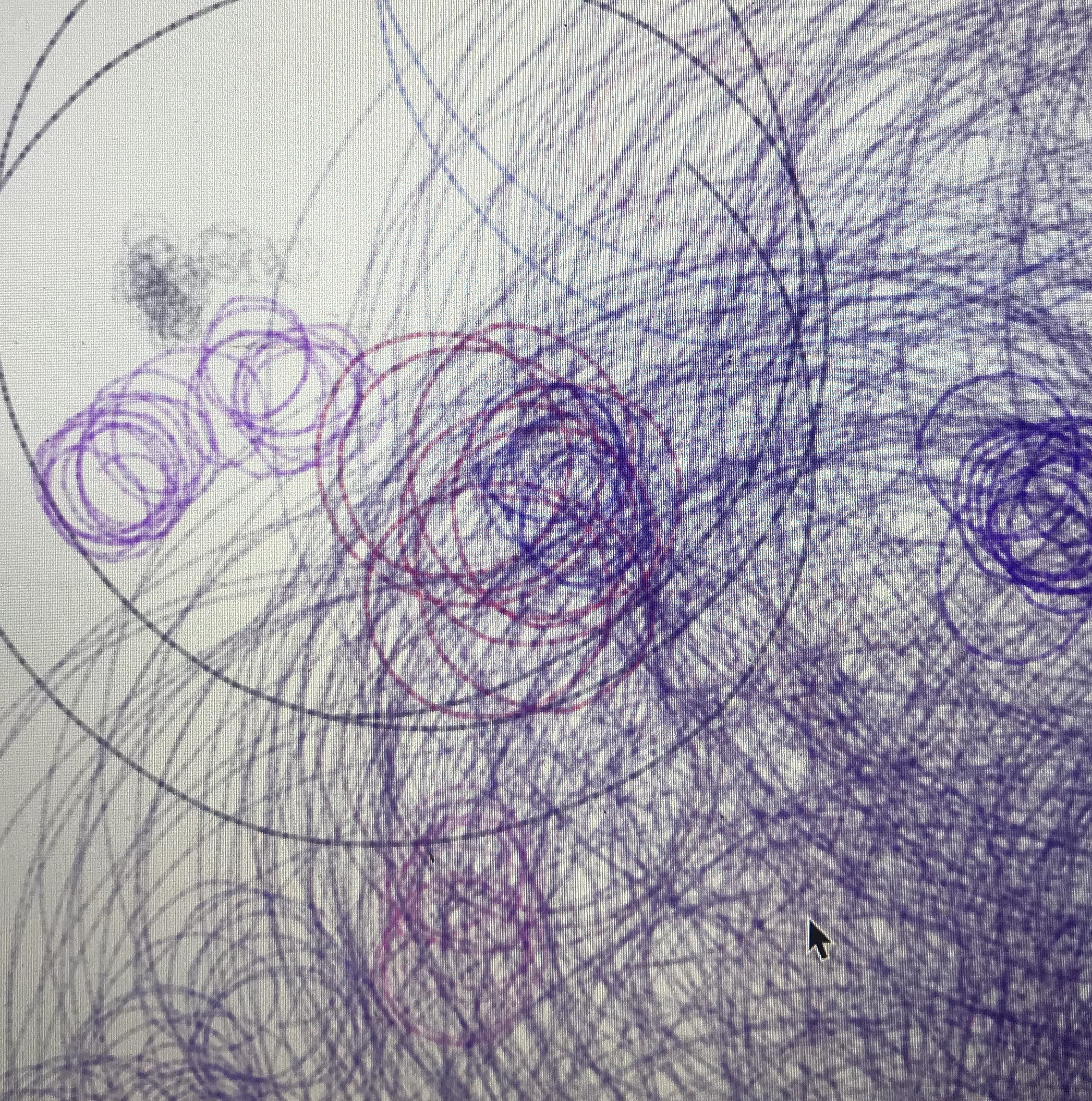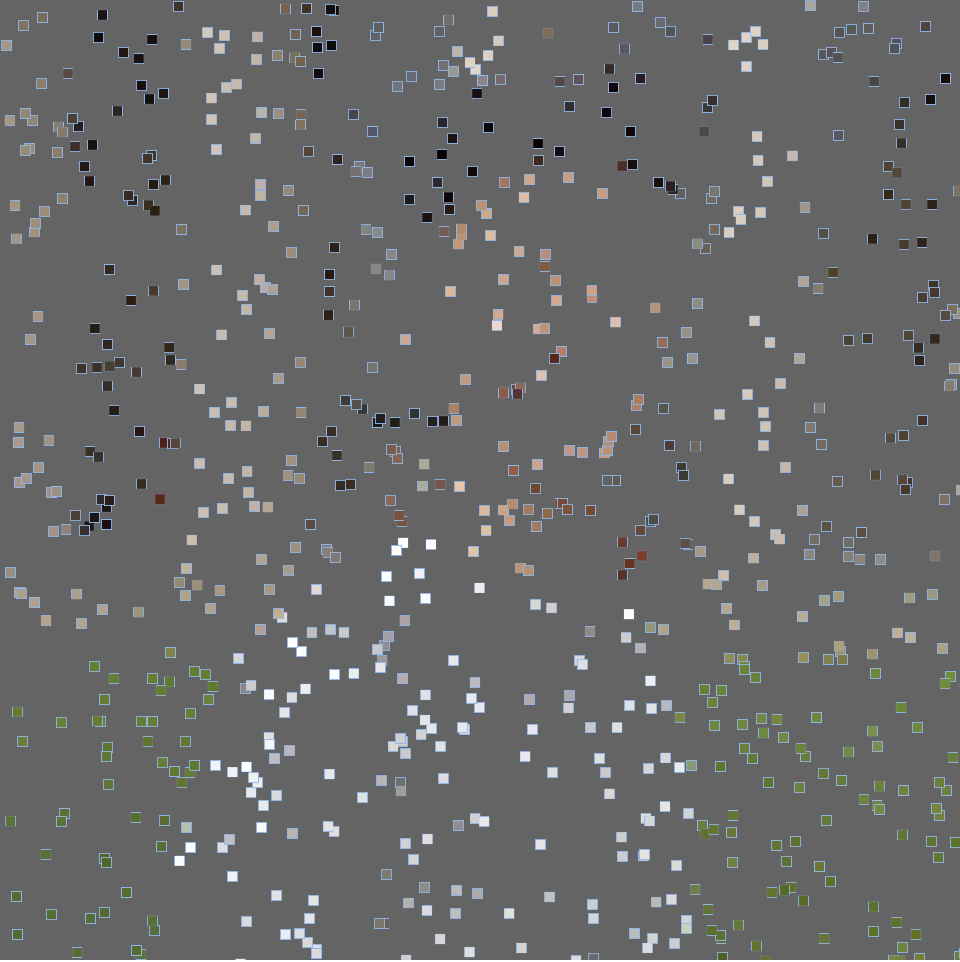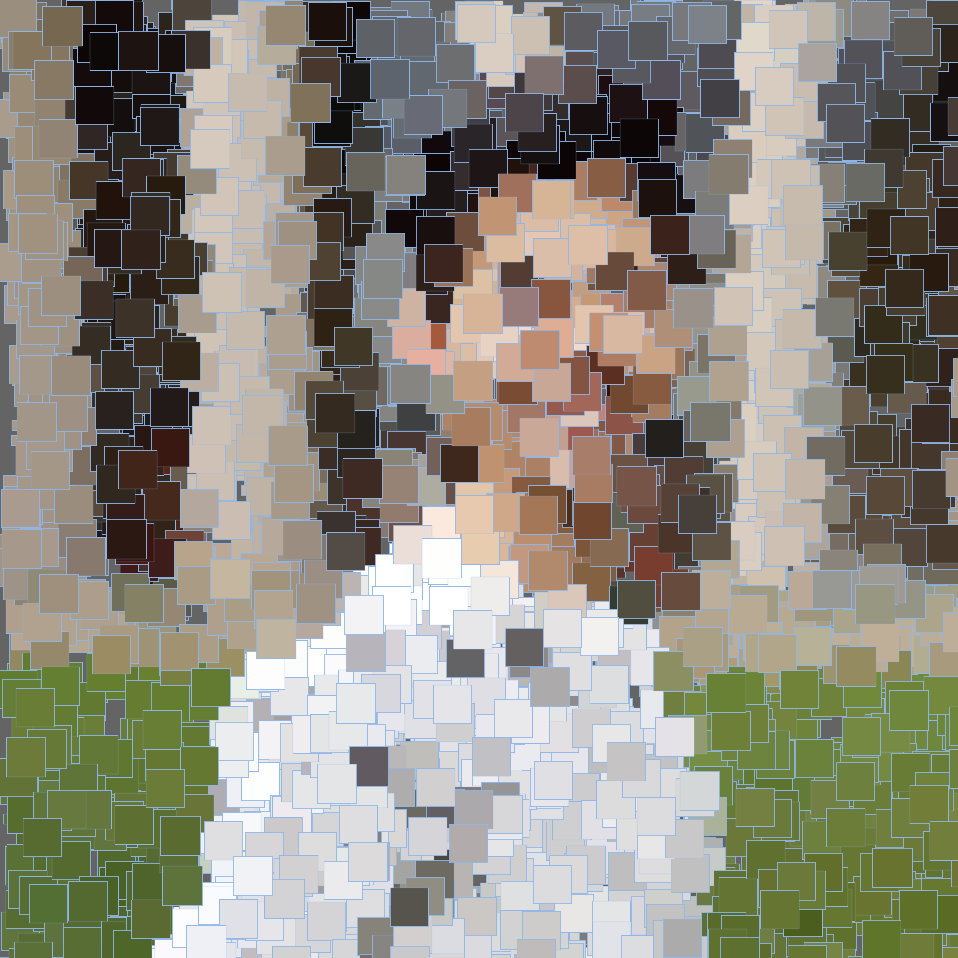/*
Christine Chen
Section E
cyc1@andrew.cmu.edu
Final Project
*/
var heartArray = [];
var heartCount = 0;
var carrotArray = [];
var carrotCount = 0;
var bombArray = [];
//location where the things that are collected disappear
var collect = 340;
//-------------------------------------
function setup() {
createCanvas(600, 400);
}
//-------------------------------------
function draw() {
background(255, 178, 220); //light pink background
backgroundHeart();
bunny();
renderHeart();
renderCarrot();
renderBomb();
pointDisplay();
gameOver();
}
//-------------------------------------
//***** HEART *****
function makeHeart(x, y) {
return {
x: x,
y: y,
draw: drawHeart,
}
}
function drawHeart() { //draw shape of heart
strokeWeight(0.3);
noStroke();
//color of heart changes to give glittering effect
fill(255 - random(0, width), 116, 208);
ellipse(this.x - 5, this.y, 11, 11);
ellipse(this.x + 5, this.y, 11, 11);
triangle(this.x - 10.5, this.y + 2,
this.x + 10.5, this.y + 2,
this.x, this.y + 13);
}
function renderHeart() {
//creates new heart every 30 frames
if (frameCount % 30 == 0) {
var newHeart = makeHeart(random(10, width - 10), 0);
heartArray.push(newHeart);
}
//updates heart's y location(make them fall)
for (var i = 0; i < heartArray.length; i ++) {
var heart = heartArray[i];
heart.y += 1.5;
//remove hearts that are gone (off of canvas)
//saves space to prevent codes from running slow
if(heart.y > height) {
heartArray.splice(i, 1);
}
//remove hearts that are collected
if(dist(mouseX, collect, heart.x, heart.y) < 20) {
heartArray.splice(i, 1);
heartCount++; //keeps track of heart points
}
heart.draw();
}
}
//***** CARROT *****
function makeCarrot(x, y) {
return {
x: x,
y: y,
draw: drawCarrot
}
}
//draws shapes of carrot
function drawCarrot() {
//carrot stem
fill(17, 147, 8); //green
ellipse(this.x, this.y - 5, 5, 15);
ellipse(this.x - 3, this.y - 5, 5, 15);
ellipse(this.x - 7, this.y - 5, 5, 15);
ellipse(this.x + 3, this.y - 5, 5, 15);
ellipse(this.x + 7, this.y - 5, 5, 15);
//carrot body
fill(255, 117, 25); //orange
triangle(this.x - 10, this.y,
this.x + 10, this.y,
this.x, this.y + 30);
}
function renderCarrot() {
//creates new carrot every 600 frames
if (frameCount % 600 == 0) {
var newCarrot = makeCarrot(random(10, width - 10), 0);
carrotArray.push(newCarrot);
}
//updates carrot location
for (var i = 0; i < carrotArray.length; i ++) {
var carrot = carrotArray[i];
carrot.y += 5; //carrot falls quite fast
//removes carrots that are gone(off of canvas)
if(carrot.y > height) {
carrotArray.splice(i, 1);
}
//removes carrots that are eaten
if(dist(mouseX, collect, carrot.x, carrot.y) < 20) {
carrotArray.splice(i, 1);
carrotCount++; //keeps track of number of carrots collected
}
carrot.draw();
}
}
//***** BOMB *****
function makeBomb(x, y) {
return {
x: x,
y: y,
draw: drawBomb,
}
}
//draws shape of bomb
function drawBomb() {
//spark
fill(255, 0, 0); //red
ellipse(this.x + 20, this.y - 23, 10, 10);
//bomb line
stroke(0); //black
strokeWeight(2);
line(this.x, this.y, this.x + 18, this.y - 20);
//bomb body
noStroke();
fill(48, 47, 47); //dark gray
ellipse(this.x, this.y, 30, 30);
}
function renderBomb() {
//creates bomb every 100 frames
if (frameCount % 100 == 0) {
var newBomb = makeBomb(random(10, width - 10), 0);
bombArray.push(newBomb);
}
//updates bomb location
for (var i = 0; i < bombArray.length; i ++) {
var bomb = bombArray[i];
bomb.y += 6;
//removes bomb that is gone (off of canvas)
if(bomb.y > height) {
bombArray.splice(i, 1);
}
//removes bomb that is collected
if(dist(mouseX, collect, bomb.x, bomb.y) < 30) {
bombArray.splice(i, 1);
//heart point deducted by 10 points if bomb collected
heartCount -= 10;
//carrot point deducted by 1 if bomb collected
carrotCount -= 1;
}
bomb.draw();
}
}
//***** BUNNY *****
function bunny() {
//constrain bunny location to inside canvas
var control = constrain (mouseX, 15, width - 15);
noStroke();
fill(255); //white
//body
fill(255); //white
ellipse(control, 370, 55, 50);
//feet
ellipse(control - 15, height - 5, 20, 10); //left
ellipse(control + 15, height - 5, 20, 10); //right
//hands
ellipse(control - 27, height - 45, 20, 10); //left
ellipse(control + 27, height - 45, 20, 10); //right
//ears
ellipse(control - 8, 300, 10, 30); //left
ellipse(control + 8, 300, 10, 30); //right
//face
ellipse(control, 330, 70, 50);
//eyes
fill(0);
ellipse(control - 5, 325, 5, 5); //left
ellipse(control + 5, 325, 5, 5); //right
//mouth
fill(255, 122, 169); //pink
ellipse(control, 338, 12, 10);
//nose
fill(0);
ellipse(control, 331, 5, 4);
//blush
fill(252, 204, 204); //light red
ellipse(control - 10, 331, 10, 7); //left
ellipse(control + 10, 331, 10, 7); //red
}
//***** GAMEOVER *****
function gameOver() {
//if carrot point is less than 0,
//or if heart point is or less than -100,
//game ends
if (carrotCount < 0 || heartCount <= -100) {
noLoop();
//gameover sign background
fill(167, 0, 47); //red
rectMode(CENTER);
rect(width/2 - 10, height/2 - 10, 260, 70);
//gameover sign text
fill(255);
textSize(22);
textAlign(CENTER);
text(" G A M E O V E R", width/2 , height/2);
//skull
fill(255); //white
ellipse(width/2 - 100 , height/2 - 10, 30, 22);
rect(width/2 - 100 , height/2, 16, 10);
//skull eyes
fill(50);//gray
ellipse(width/2 - 105 , height/2 - 10, 7, 7);
ellipse(width/2 - 95 , height/2 - 10, 7, 7);
}
}
//***** POINT DISPLAY *****
function pointDisplay() {
stroke(0); //black
strokeWeight(0.2); //light outline
fill(250, 214, 226); //pink
rect(10, 10, 180, 60);
//heart
noStroke();
fill(108, 136, 255);
ellipse(35, 35, 11, 11);
ellipse(45, 35, 11, 11);
triangle(29.5, 37,
50.5 , 37,
40, 48);
//heart count text
fill(30);
textSize(20);
text("= " + heartCount, 55, 45);
//carrot
fill(17, 147, 8); //green
ellipse(120, 25 , 5, 15);
ellipse(117, 25, 5, 15);
ellipse(113, 25, 5, 15);
ellipse(123, 25, 5, 15);
ellipse(127, 25, 5, 15);
fill(255, 117, 25); //orange
triangle(110, 30,
130, 30,
120, 60);
//carrot count text
fill(30);
textSize(20);
text("= " + carrotCount, 140, 45);
}
//***** BACKGROUND HEART *****
function backgroundHeart() {
noStroke();
fill(253, 158, 209); //pink
ellipse(180, 140, 260, 270);
ellipse(420, 140, 260, 270);
triangle(73, 220,
width - 73 , 220,
width/2, height - 5);
ellipse(width/2, 220, 80, 80);
}


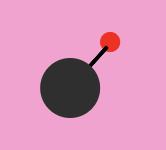
How to play:
– Move bunny left and right with mouse to control bunny’s position
– All things have to touch bunny’s mouth to be effective
– Collect hearts to gain points
– Collect carrots to store as lives
– Carrots save the bunny when bomb hits the bunny
– Bomb takes away bunny’s lives and deduct 10 heart points
– Bunny dies when heart point is -100 or when bomb hits bunny and there is no carrot to save bunny
Statement:
For my project, I decided to create a game that involves a bunny and heart rain. I wanted to create a simple, cute game that people can play with. Hearts are points and the carrots are lives. The bomb is what kills the bunny. The player should aim to gain as many heart points as possible. The stored carrots save the bunny from dying in the case that the bomb hits the bunny. I made the bomb fall fast on purpose so that it will be harder to escape the bomb, adding some excitement to the game. I also made the carrots, which rarely appears (to make the carrots more precious), fall fast. 10 heart points are deducted if the bunny hits the bomb. This is so that the player can’t keep using carrots to save the bunny while not collecting hearts. I made the background simple for this game as because of the “glittering effect” of the heart and the movement of the things falling, having more complicated background will confuse the player’s eyes too much. Initially, I made the hearts simply pink, but then I thought that was too boring and so I changed my codes so that they change colors randomly to create a glittering effect. The things have to touch the bunny’s mouth to be effective as my idea is that the bunny “eats” the things to collect them. For my codes, I used a lot of nested functions to make my codes clearer and easier to manipulate. I had a lot of fun creating this project as I have always wanted to create a cute game with movements of hearts that people can play with that cheers them up on bad days.
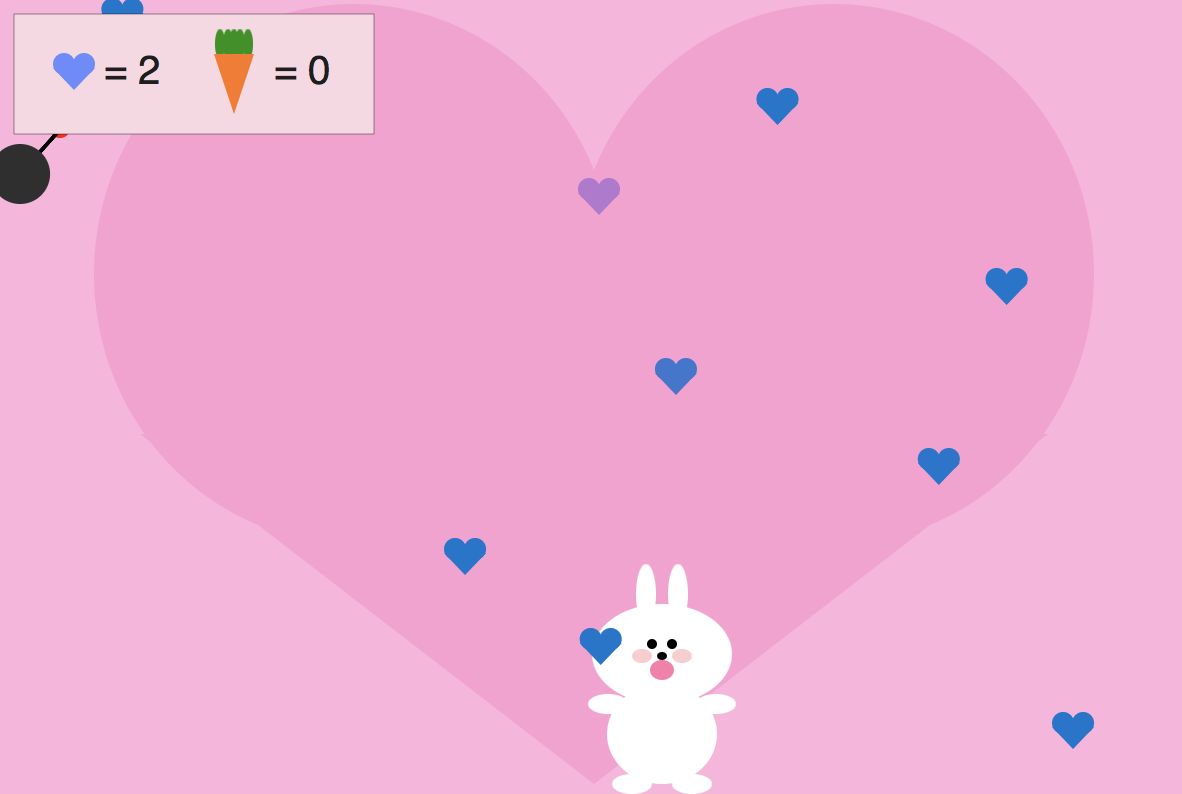
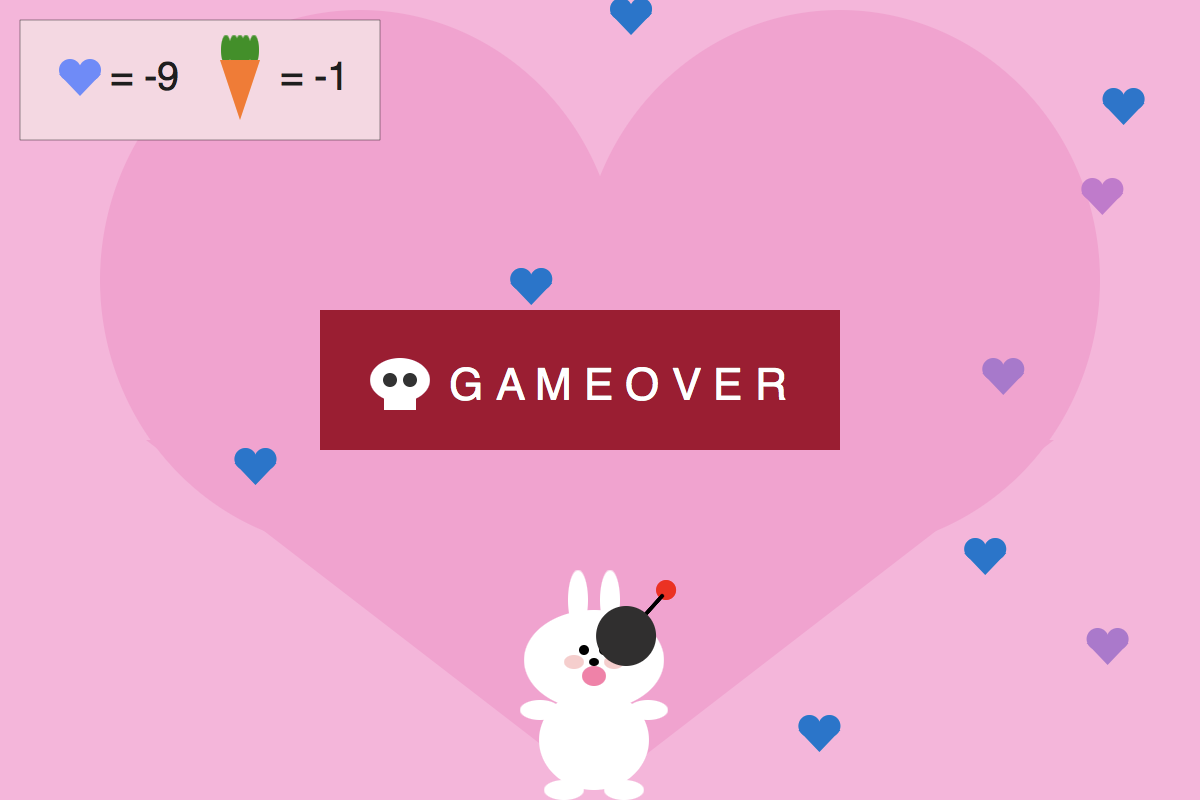
![[OLD FALL 2018] 15-104 • Introduction to Computing for Creative Practice](https://courses.ideate.cmu.edu/15-104/f2018/wp-content/uploads/2020/08/stop-banner.png)
